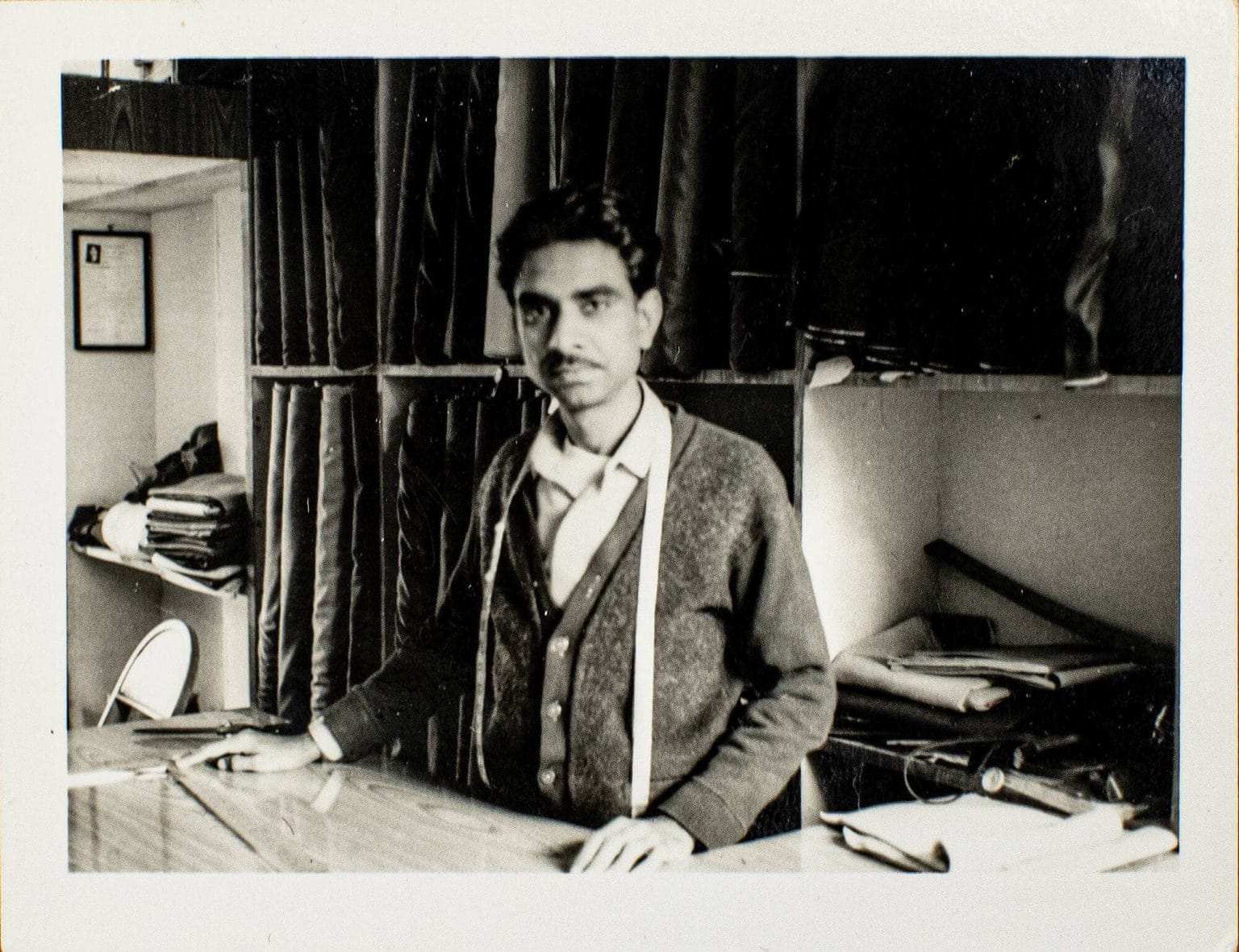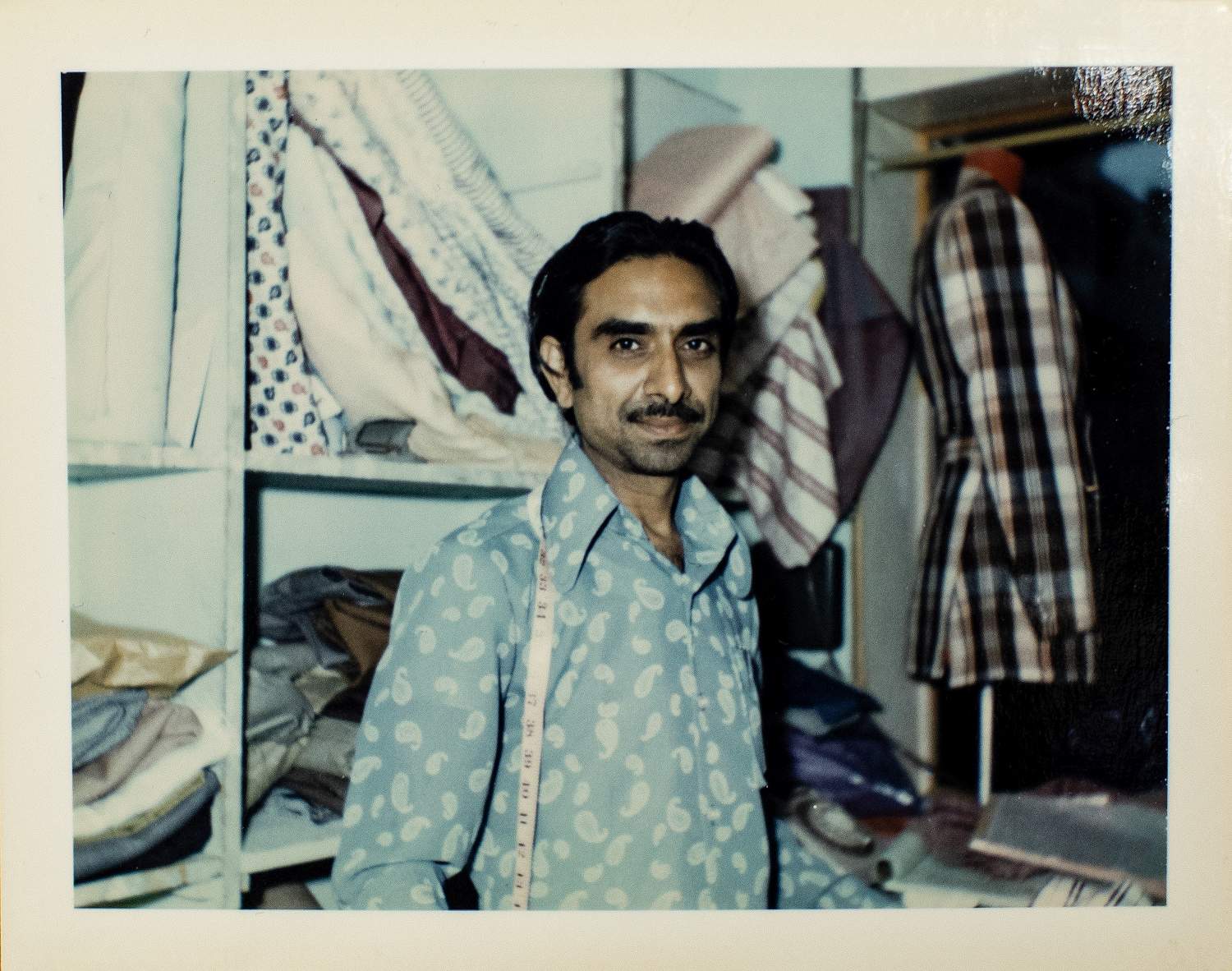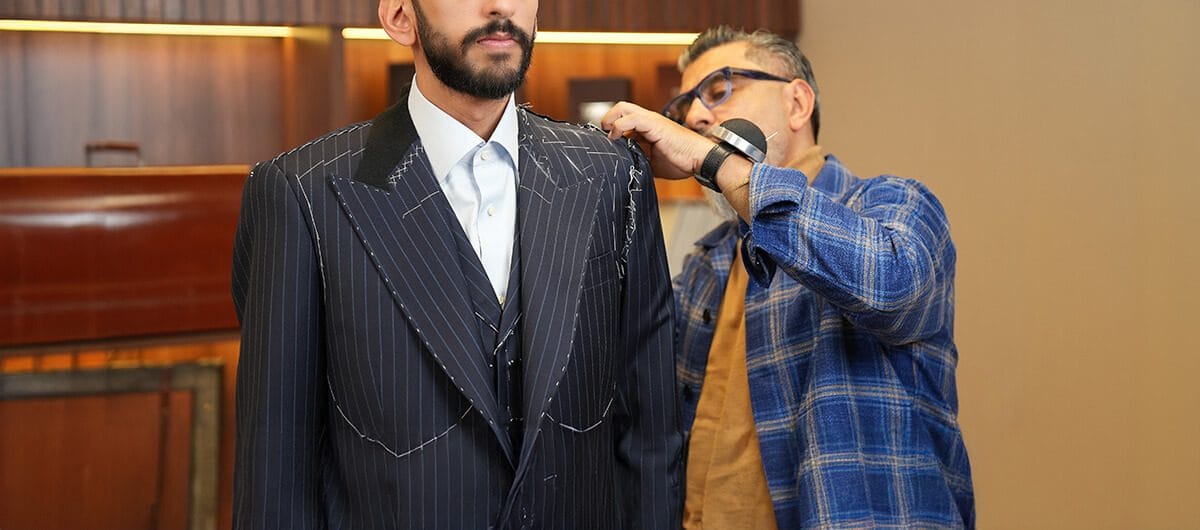

First, let us differentiate what makes a master tailor different from a regular tailor.
The key differences between a master tailor and a regular tailor lie in their experience, skillset, and the services they offer. Here’s a breakdown:
Experience and Expertise:
- Master Tailor: A master tailor has significantly more experience, often with a minimum of 8-10 years of dedicated training. This includes not only tailoring skills but also pattern-making, fabric knowledge, and a deep understanding of garment construction.
- Regular Tailor: A regular tailor may have several years of experience but is likely not at the same level as a master tailor. Their skills may be focused on alterations and repairs rather than creating custom garments from scratch.
Mr. Prakash Parmar, Master Tailor, CEO of Parmar Tailors, Founder of Bespoke Tailoring, and current Director of the World Federation of Master Tailors (WFMT) in action.
- Master Tailor: A master tailor possesses a vast skillset. They can:
- Create custom garments: They can draft patterns, select the perfect fabrics, and meticulously handcraft bespoke suits, dresses, and other clothing pieces explicitly tailored to a client’s body and preferences.
- Complex alterations and repairs: They can handle intricate alterations and repairs, ensuring the garment maintains its original shape and style.
- Expert fitting: They have a keen eye for detail and exceptional fitting skills, ensuring garments drape flawlessly on the client.
- Normal Tailor: A normal tailor might offer:
- Basic alterations: They can handle simple alterations like hemming pants, shortening sleeves, or taking in a waistline.
- Minor repairs: They can fix minor tears, rips, or broken zippers.
- Ready-to-wear tailoring: They might adjust off-the-rack garments for a better fit, but the customization options are likely limited.
- Master Tailor: Due to their advanced skillset and the time involved in creating custom and bespoke garments, master tailors typically charge a premium price. Their clientele often consists of individuals who value quality, a perfect fit, and exclusivity.
- Normal Tailor: Prices for alterations and repairs at a regular tailor are generally more affordable. These tailors cater to a broader range of clientele who may prioritize convenience and cost-effectiveness over extensive customization.
Think of a master tailor as a master chef who creates gourmet dishes from scratch, while a normal tailor is like a skilled cook who prepares delicious meals from pre-made ingredients or performs adjustments to existing recipes.


The history of tailoring in Bur Dubai, Dubai, reflects a blend of traditional craftsmanship and modern influences shaped by the region’s cultural and economic evolution. Here’s an overview:
Parmar Tailors was established in Bur Dubai, Dubai, in 1956 by the late master tailor, Mr. Pitambar Parmar. It is now being managed by Mr. Prakash Parmar and Mr. Bharat Parmar. Mr. Prakash Parmar is a 7th-generation tailor, master tailor, founder of Bepsoke Tailoring Dubai, and currently one of the Directors of the World Federation of Master Tailors (WFMT).
- Cultural Influence: Tailoring in Dubai, particularly in Bur Dubai, has deep roots in the local culture where traditional dress, such as the kandura for men and abaya for women, were integral parts of daily attire.
- Early Tailoring Shops: Historically, tailoring was a craft practised by skilled artisans who catered to the needs of local communities, including expatriates who settled in the area and sought custom suits, bespoke suits, custom trousers, and more.
- Expansion with Population Growth: As Dubai experienced rapid urbanization and economic growth from the mid-20th century onwards, the demand for tailoring services expanded. Bur Dubai, with its central location and historical significance, became a hub for tailoring shops.
- Diversification of Services: To cater to the diverse population, tailors in Bur Dubai began offering a wider range of services beyond traditional attire, including bespoke suits, custom suits, dresses, and alterations.
- Role in Dubai’s Economy: Tailoring remains an essential service in Bur Dubai, contributing to the city’s reputation as a shopping and fashion destination.
- Integration of Technology: Many traditional tailors have adopted modern techniques and technology to streamline processes and meet contemporary fashion trends.
- Preserving Tradition: Tailoring in Bur Dubai plays a crucial role in preserving Emirati cultural heritage by maintaining craftsmanship and techniques passed down through generations.
- Community Engagement: Tailors often serve as community hubs, providing not only clothing but also cultural connections and advice on traditional attire.
- Competition and Globalization: The industry faces challenges from globalization and online shopping trends, prompting some tailors to innovate and adapt their offerings.
- Government Support: The Dubai government’s initiatives to promote traditional crafts and local businesses have also supported the tailoring industry in Bur Dubai.
The history of tailoring in Bur Dubai reflects both continuity with traditional craftsmanship and adaptation to modern demands. As Dubai continues to evolve as a global city, the tailoring industry in Bur Dubai remains a testament to the importance of cultural heritage and craftsmanship in a rapidly changing world. Master Tailors from all over the world, including artisans from India, settled in Bur Dubai decades ago, and more master tailors were honed, trained, and developed there. Parmar Tailors’ main branch is at Al Souq Al Kabeer in the heart of Bur Dubai.

